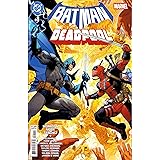1.
You’ve probably heard that Victorians invented the vibrator to treat women for “hysteria,” right? Yeah… that’s not really true. Vibrators were a hand-cranked massage device that doctors used to treat a number of issues, including hysteria, but they were likely only used on the back and neck, and they were used on both men and women. Also, despite what we often assume, Victorians weren’t totally clueless about female sexuality, so they weren’t secretly handing out orgasms under the guise of medicine. This is mostly a modern myth, as the whole vibrator story really took off thanks to a 1999 book and later a movie that ran with the idea!
2.
Similarly, the idea that all Victorians were buttoned-up prudes isn’t true. Sure, they had strict social rules and didn’t exactly lead with their feelings, but behind closed doors, they were just as curious and passionate as people are today. There was actually a ton of interest in sex, desire, and the human body, and you could buy things like sex toys and erotic books.
3.
Michelangelo’s David has always been a work of art; however, it wasn’t always housed in a museum. From 1504 (the year it was completed) to 1873, the statue was outdoors, in front of the Palazzo Vecchio in Florence, Italy. It was moved indoors to the Galleria dell’Accademia to help protect it from deteriorating. A copy of David was placed in its original outdoor location in 1910 and is still there today.
4.
It turns out rats might not be the real villains behind the bubonic plague (the one that wiped out somewhere between 25 and 50 million people in Europe during the 14th century). It was believed that the disease was transmitted by fleas that lived on rats, which then spread the plague to humans. But newer research suggests the story is a bit different. Studies now point to human fleas and lice (the kind living in people’s hair and clothing) as the more likely culprits. In other words, it wasn’t just rats skittering through the streets spreading the disease; it was people unknowingly passing it to each other through their own bodies and belongings. The study also points out this makes more sense, too: the way the plague spread so quickly from person to person doesn’t quite match how a rat-based outbreak would behave.
5.
Paul Revere never said, “The British are coming!” to warn the American colonists. First off, he didn’t ride alone. Revere was part of a network of riders that included William Dawes and Samuel Prescott, who also helped spread the warning. Secondly, yelling, “The British are coming!” wouldn’t have made much sense, since most colonists at the time still considered themselves British. He likely said something more specific, like, “The regulars are out” or “The troops are marching.”
6.
Napoleon and his troops did not shoot off the Sphinx’s nose with cannonballs. In fact, sketches of the Sphinx without a nose existed long before Napoleon ever set foot in Egypt. Most historians believe the nose was deliberately chiseled off sometime in the 14th century by a Sufi Muslim, who saw the Sphinx as a symbol of idolatry and wanted to destroy it.
7.
You may have heard the story that when people saw the 1896 short film L’Arrivée d’un train en gare de La Ciotat, or Arrival of a Train at La Ciotat — which shows a train pulling into a station — they panicked and ran out of the theater, thinking the train was coming straight at them. Well, it’s more than likely not true. Most film historians think the tale is exaggerated or completely made up, possibly added later to hype up how “new and shocking” cinema was at the time. Additionally, given that it was in black and white and had no sound, people knew what they were looking at.
8.
Albert Einstein never flunked math as a kid. In reality, Einstein was actually very good at math from a young age. By the time he was 12, he was teaching himself algebra and geometry, and he was working through college-level material by his early teens.
9.
There is a misconception that medieval food was bland and boring. On the contrary, people in the Middle Ages actually used a ton of spices in their cooking. Spices like cinnamon, cloves, nutmeg, pepper, saffron, and ginger were incredibly popular, especially among the wealthy. In fact, spices were so prized that they were often more expensive than meat, and some were even used like currency. And for those who couldn’t afford spices, they would flavor their meals with herbs and local seasonings when they could.
10.
Spartans didn’t fight in bare-chested or nude (that would literally put them at risk of dying easily). In reality, Spartan warriors wore armor, including bronze helmets, breastplates, and greaves. The whole “ripped guys charging into battle wearing nothing but capes and sandals” thing comes from art created over the centuries and movies, like 300, that were more focused on showing off idealized human bodies than sticking to what ancient soldiers actually wore.
11.
White Star Line, the company that owned the Titanic, never said the ship was “unsinkable.” In reality, some promotional materials described it as “practically unsinkable,” which is a big (and important) difference. That phrasing reflected confidence in the ship’s design, not a guarantee. But after the disaster, the story shifted, and people believed that it had been marketed as “unsinkable.”
12.
The whole idea that the Ancient Romans had vomitoriums, special rooms to go vomit during lavish feasts so that they could keep eating, is a huge myth. As this article points out, it was likely a single linguistic error, as it sounds like our modern word for vomit. It actually referred to the passageways in amphitheaters, theaters, and stadiums that allowed crowds to “spew out” quickly after a show or event. The word comes from the Latin vomere, meaning “to discharge” or “to gush forth,” but it had nothing to do with food or purging.
13.
George Washington didn’t have wooden teeth. He did have dentures, but they were made from a mix of materials like ivory, human teeth, and gold, but not wood. Also, wood wouldn’t have been used to make dentures at the time. The wooden teeth rumor likely started because the ivory in his dentures stained over time, which would have given them a wooden appearance.
14.
Marilyn Monroe’s iconic, breathy performance of “Happy Birthday, Mr. President” at JFK’s 45th birthday might seem like a spontaneous, flirtatious stunt. However, it was far from a last-minute PR gimmick. In reality, Marilyn had been asked to perform at the star-studded event months in advance (as it was put together by her friend, and the president’s brother-in-law, actor Peter Lawford). Marilyn took it seriously and spent hours rehearsing in the days leading up to the event.
15.
The term “UFO” didn’t come from the 1947 Kenneth Arnold Mount Rainier sighting or the Roswell incident (the first two big UFO stories in the US); in fact, they used the terms flying disks or saucers. It was actually coined by the US Air Force in 1952, as a more technical and neutral way to describe any unknown object, covering everything from balloons and aircraft to, yes, possibly alien crafts. The idea was to keep things neutral and grounded in observation, not speculation.
16.
Most 19th-century cowboys didn’t wear those oversized, “10-gallon” cowboy hats you see in Westerns. In fact, our association with cowboys wearing 10-gallon cowboy hats comes from Western movies from the 1920s. Early cowboys were more likely to wear bowler hats, sombreros, or whatever sturdy headgear they could get their hands on. The bowler was especially popular as it stayed on during windy rides and didn’t get in the way. The wide-brimmed Stetson, which we now think of as the cowboy hat, didn’t become common until the late 1800s, when it started catching on for its practicality and sun protection out on the range.
17.
And lastly, Walt Disney was not cryogenically frozen. In reality, Walt was cremated two days after his death in 1966. His ashes were placed in an urn and interred at the family mausoleum in Forest Lawn Memorial Park in Glendale, California (photo of the mausoleum below). According to Snopes, rumors of his body being frozen started almost immediately after his death, because it coincided with the rise of cryonics as a concept, and it was further spread by two discredited biographies that were published in the ’80s and ’90s. In 1972, Walt’s daughter Diane did set the record straight, and wrote, “There is absolutely no truth that my father, Walt Disney, wished to be frozen. I doubt that my father had ever heard of cryonics.”
















